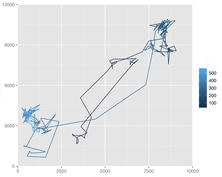Publication trimestrielle du Laboratoire
d'analyse et d'architecture des systèmes du CNRS
In this thesis, we consider frequency assignment problems arising from an SDMA satellite communication system which consists of a satellite and a number of users distributed inside a fixed sized service area. The objective is to assign a given number of frequency carriers to as many users as possible. This assignment should not violate the incurred interference constraints. Two types of interference are considered i.e. binary and cumulative interference. For each of them, single carrier and multiple carrier frequency assignment models are taken into account. We also propose an Integer Linear Programming (ILP) formation to deal with 2-dimensional frequency time assignments which is more complicated and harder to solve. Single carrier FAPs are solved by greedy algorithms and ILP. A Beam Moving algorithm is devised to further improve the solutions by solving a non-linear optimization problem. Multiple carrier FAPs are modelled as scheduling problem and ILPs. We show that the scheduling model solved through constraint programming methods offers superior performance than the proposed ILP. It is worth noting that, by transforming the cumulative interference into binary interference, scheduling method together with clique-induced constraints yields much better results. A frequency assignment problem that incorporates the specifications and constraints provided by the industry is also considered. These requirements render the resource allocation problem highly complex. This complexity and the fact that frequency assignment plans must be recomputed frequently in order to cope for user mobility yield classic optimization tool such as ILP impractical. According to this, two greedy algorithms are devised and tested.





